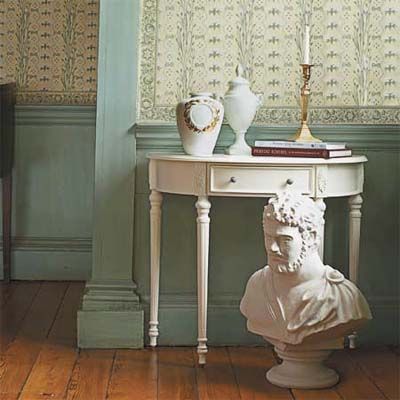
Federal-style architecture and design emerged in the United States after the Revolutionary War, from about 1780–1820. This distinctly American style represents a significant shift from earlier European influences, reflecting the country’s newfound independence and identity.
The Federal style is simple, with symmetry and refined elegance. Interiors have muted wall colors, minimal white trim, and delicate carved or inlaid decorations. This style is punctuated by bold patriotic symbols, such as fighting eagles, shield-shaped chair backs, and trophy-like urns.
Federal Details
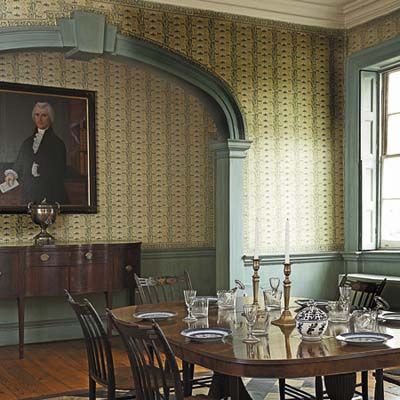
Federal-style details can be blended with neoclassical designs like Colonial or Georgian, or found in midcentury modern settings. Peter Kenny, curator of American decorative arts for New York’s Metropolitan Museum of Art, describes the style as “the American profile,” referring to its distinctive use of ovals, arches, and reeded columns.
Portraits and Busts
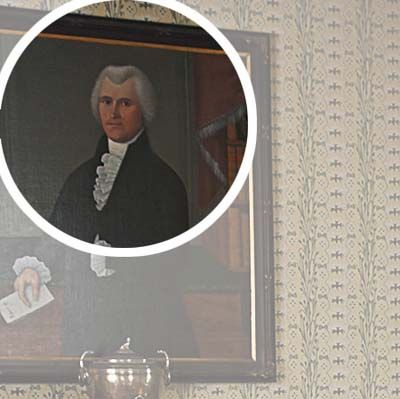
Portraiture played a significant role in Federal-style decor, drawing inspiration from democratic Rome. Local leaders often commissioned heroic depictions of themselves, such as the portrait of Col. John Chester, who served as George Washington’s military aide. Federal artwork often conveyed an aspirational quality, reflecting the period’s ideals and philosophies.
Arches
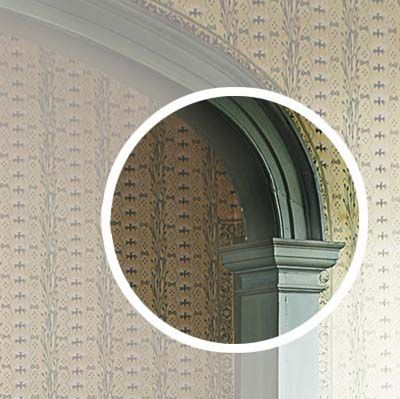
Architectural elements like niches, alcoves, arches, and curved casings became prevalent in Federal-style homes thanks to the widespread circulation of carpenters’ pattern books by 1790. These features add dimension and sophistication while framing doorways or creating display areas for decorative objects. At the time, arches signified structural innovation and stylistic finesse.
Artisanship
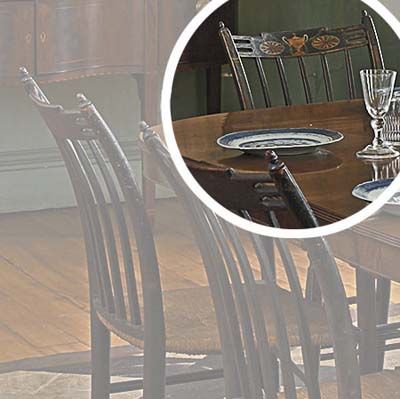
Federal style furniture had some regional variation. Charleston chairs have intricately carved backs, while Baltimore and Boston pieces, like those pictured, have painted details. Elements such as tapered legs and ornamental inlays became hallmarks of the period’s artistry.
Ovals

The elliptical shape was a defining characteristic of Federal style, appearing in various forms throughout homes of the time. From hardware and furniture inlays to fanlights and molding details, ovals were everywhere. Some rooms were even designed entirely around this shape, with the Oval Office being a notable example. Oval use adds visual harmony and reflects ancient Roman architectural influences.
Urns
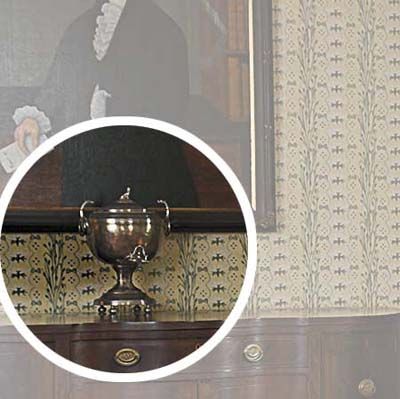
The classical urn shape was another prominent motif in Federal style design. “It was in architecture, on furniture, and as ornament,” Kenny says. Urns symbolized ancient Greek and Roman styles. They were often integrated into decorative arts, from mantelpieces to textiles.
Exterior Details
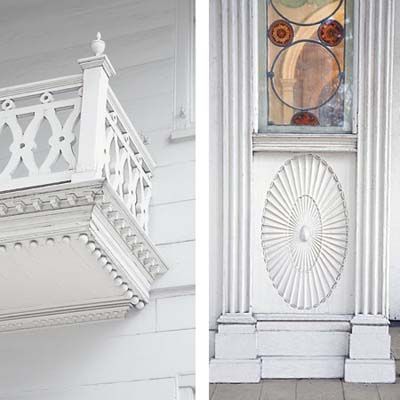
The Morris-Jumel Mansion, built in 1765, features a textbook Federal-era entrance added in 1810. This addition includes an elliptical fanlight, sidelights, and classical columns, exemplifying the style’s emphasis on symmetry and elegance. The exterior details are often mirrored inside, creating a cohesive design.
Oval-shaped carvings, also called paterae, line the door. They are commonly found on Federal-era furniture, mantels, and interior woodwork, further unifying the overall aesthetic.
Modern Federal Style
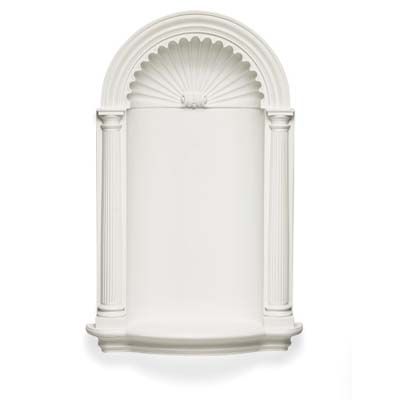
Homeowners can incorporate Federal style without creating an overly formal or dated atmosphere. Here are some contemporary furnishings that pay homage to the Federal style while remaining practical.
Wall Niche
At 33 inches high and 4 inches deep, a fiberglass wall niche is an instant display area reminiscent of Federal-era architectural details. These ready-to-paint niches can be easily recessed between wall studs, adding a historic touch while providing the perfect display area.
Classical Bust
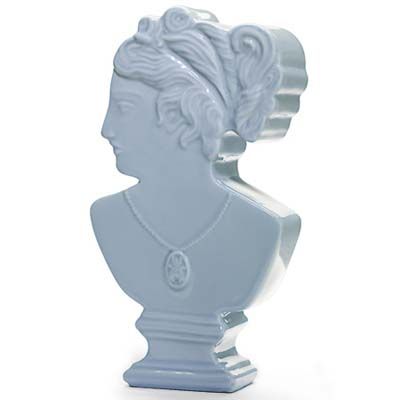
The Federal era’s fascination with Roman artifacts was largely influenced by archaeological discoveries like the excavation of Pompeii. This 13-inch-tall goddess bust, with its 2-inch depth, is a perfect example of incorporating classical elements into modern decor without overwhelming the space.
Geometric Mirror
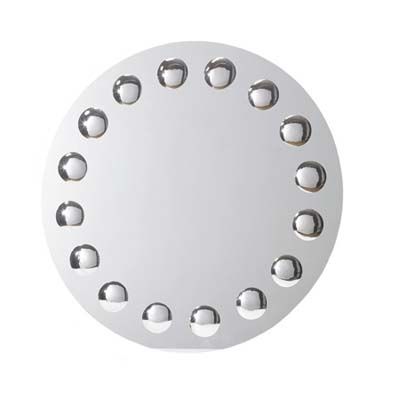
The Jada mirror, with its circular inlays, demonstrates how Federal-inspired design can seamlessly blend with contemporary looks. This versatile piece would work in a traditional setting or a midcentury modern interior. Its geometric design underscores the Federal style’s timeless appeal.
Wallpaper
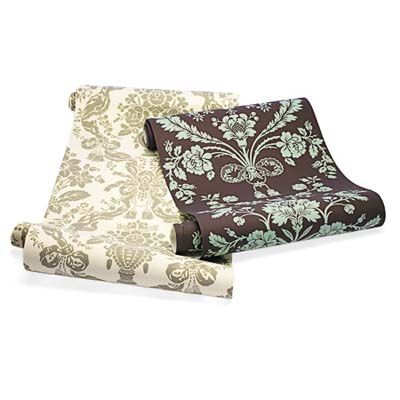
During the Federal period, wood paneling often gave way to wallpaper featuring classical motifs such as swags and urns. Modern interpretations of these designs, like the St. Germain and St. Antoine patterns, let homeowners add Federal style while keeping a fresh look.
Fighting Eagles
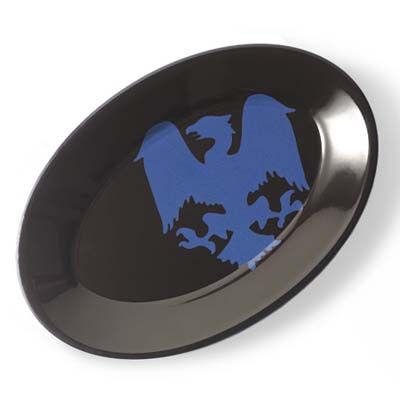
This oval platter’s eagle motif is reminiscent of an 1810 table inlay in the Metropolitan Museum’s collection. This image evolved into the version we recognize today. Using patriotic symbols in modern decor can add a subtle nod to Federal style.
Our Conclusion
Federal style continues to influence American design, offering a timeless elegance that can be adapted to various interiors. By incorporating oval shapes, classical motifs, and refined details, homeowners can pay tribute to this period while creating spaces that feel contemporary.
